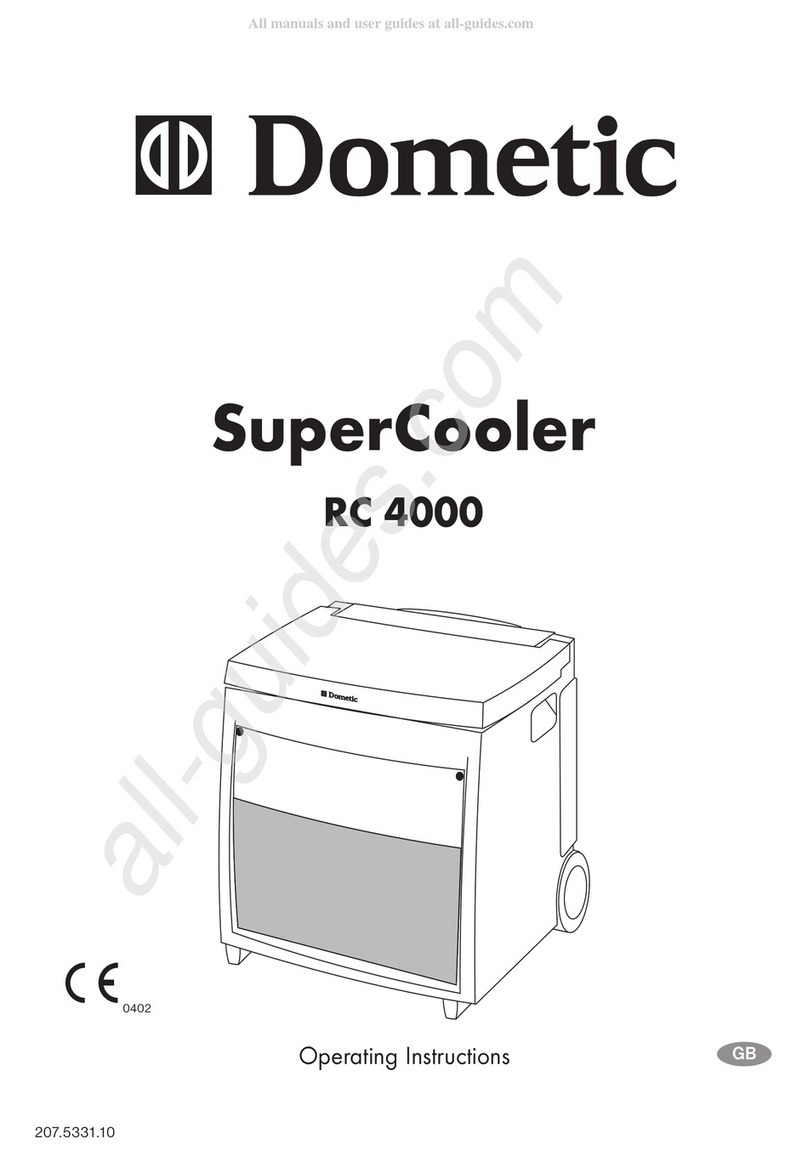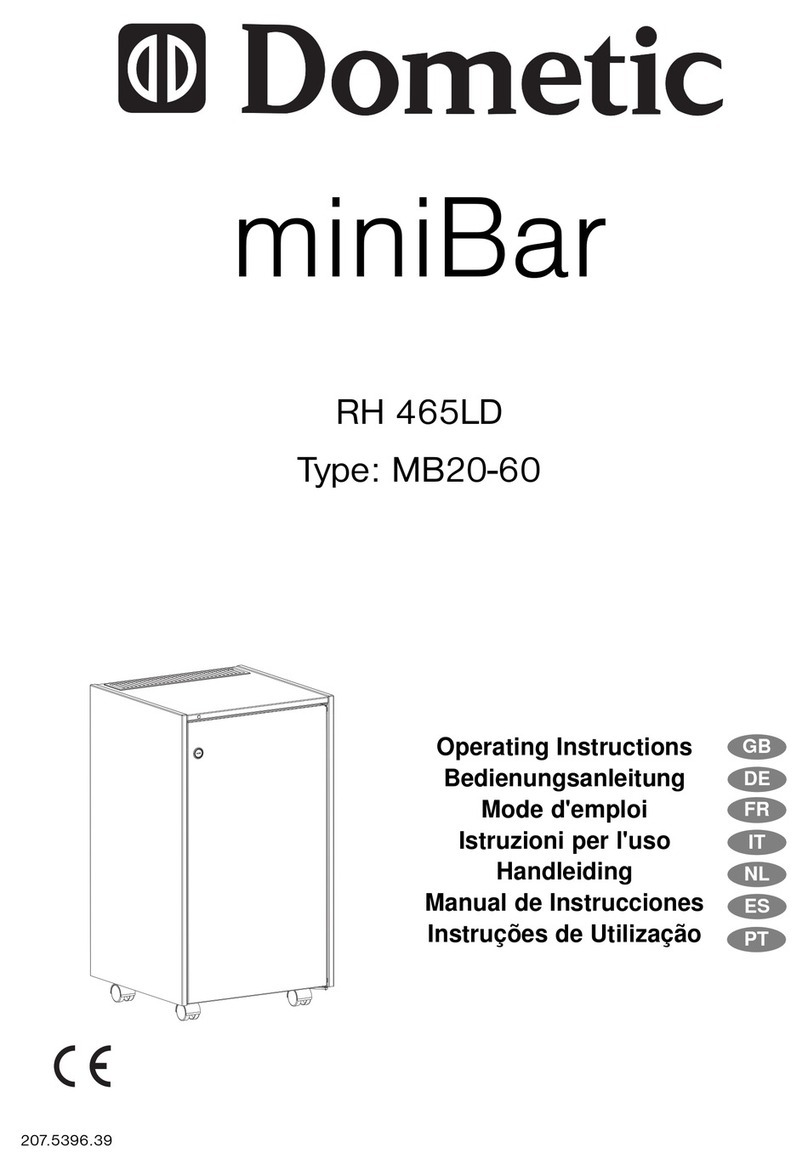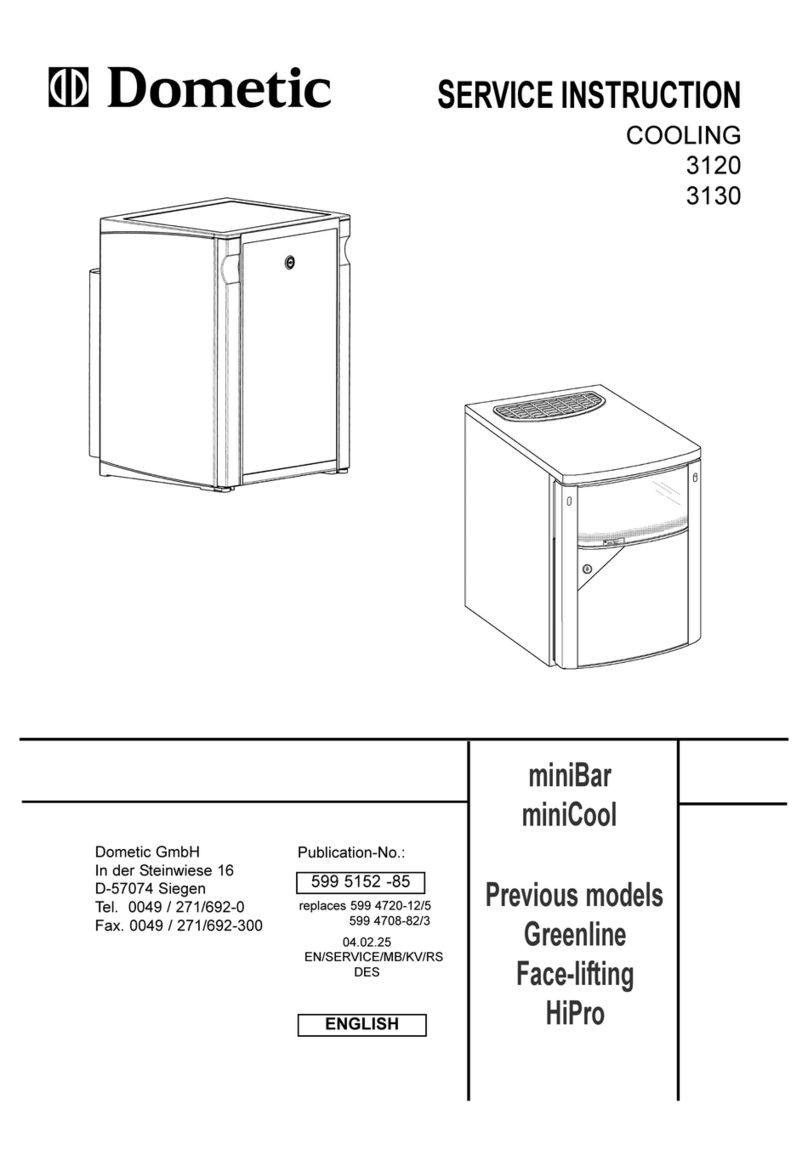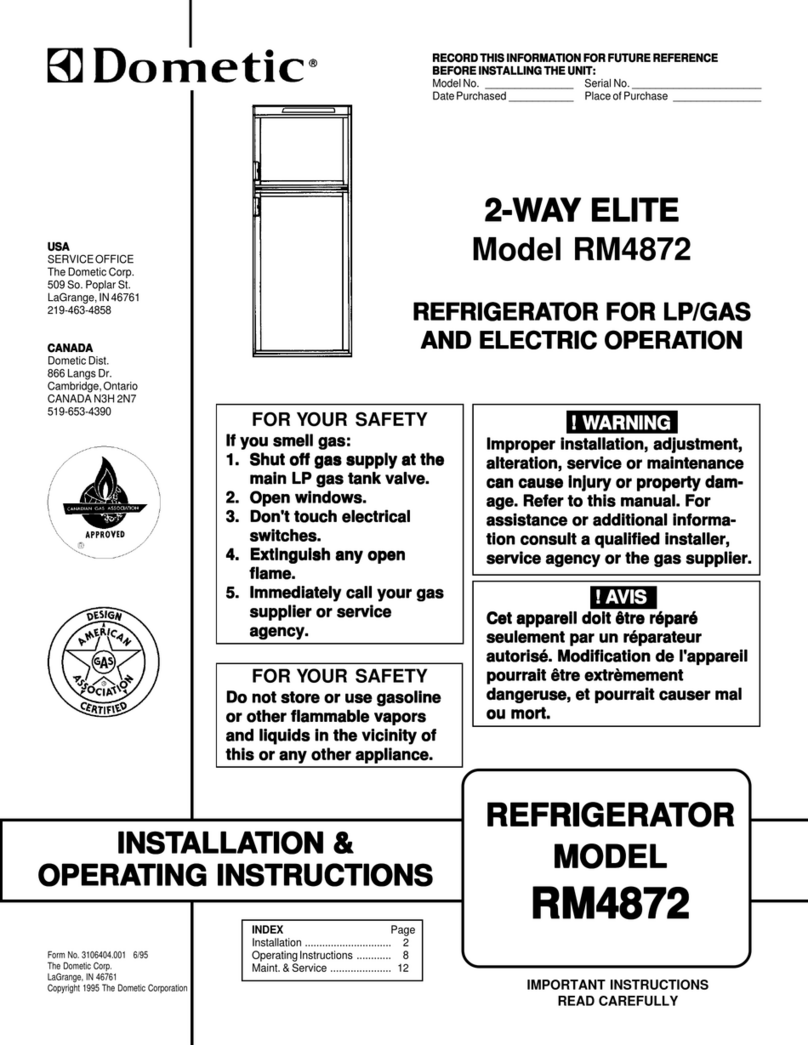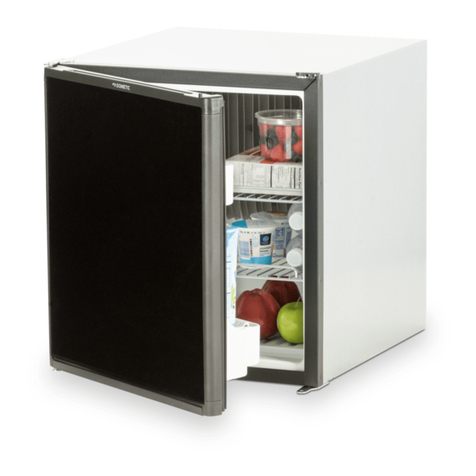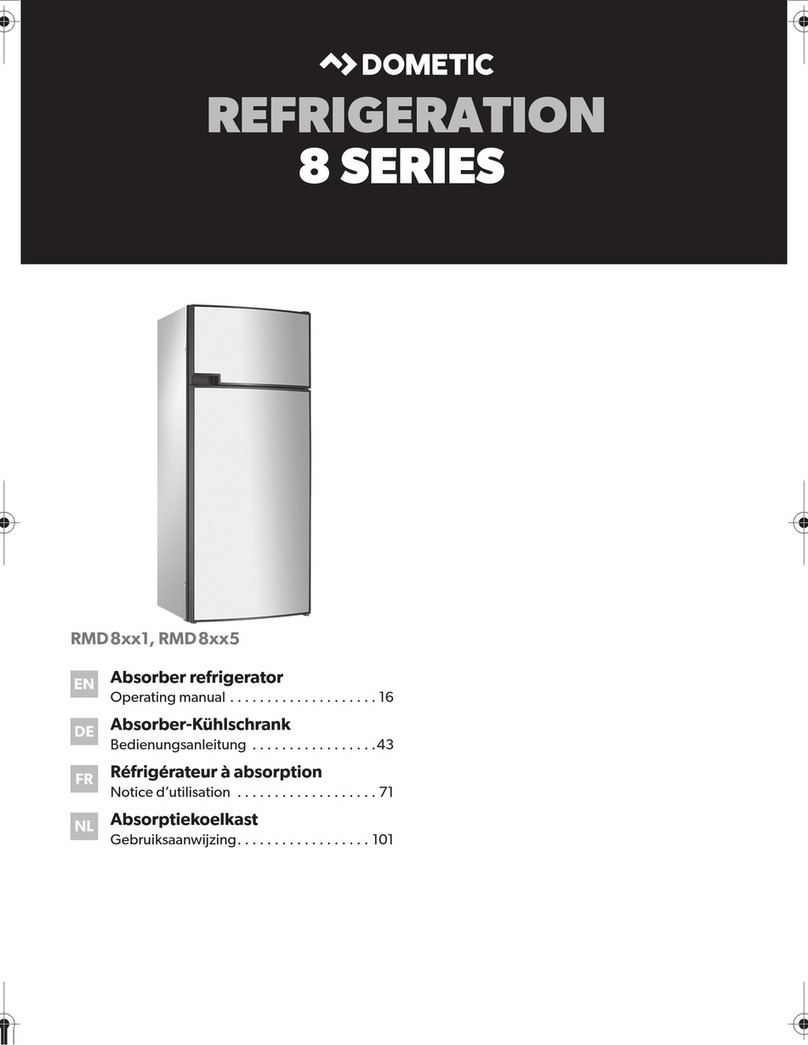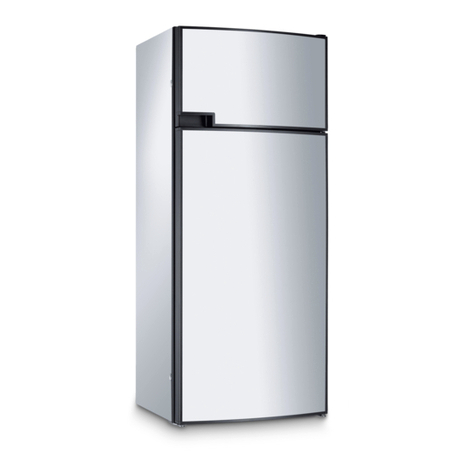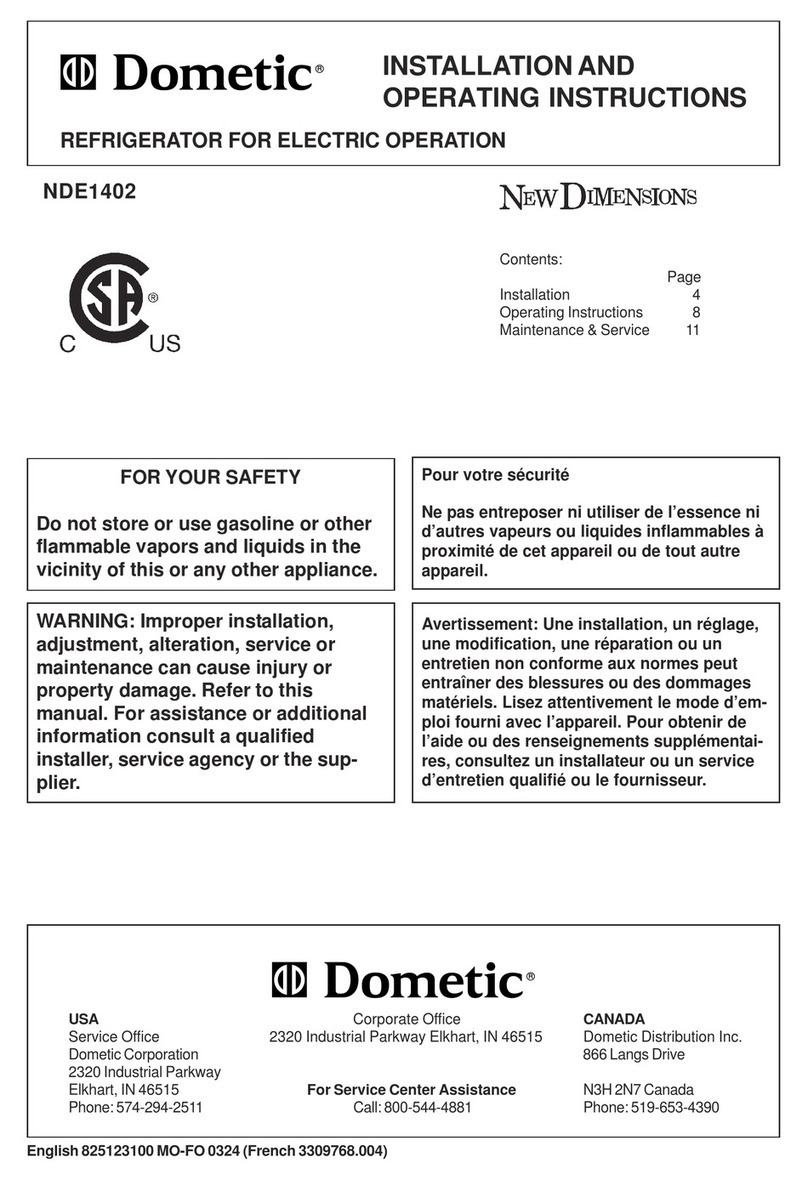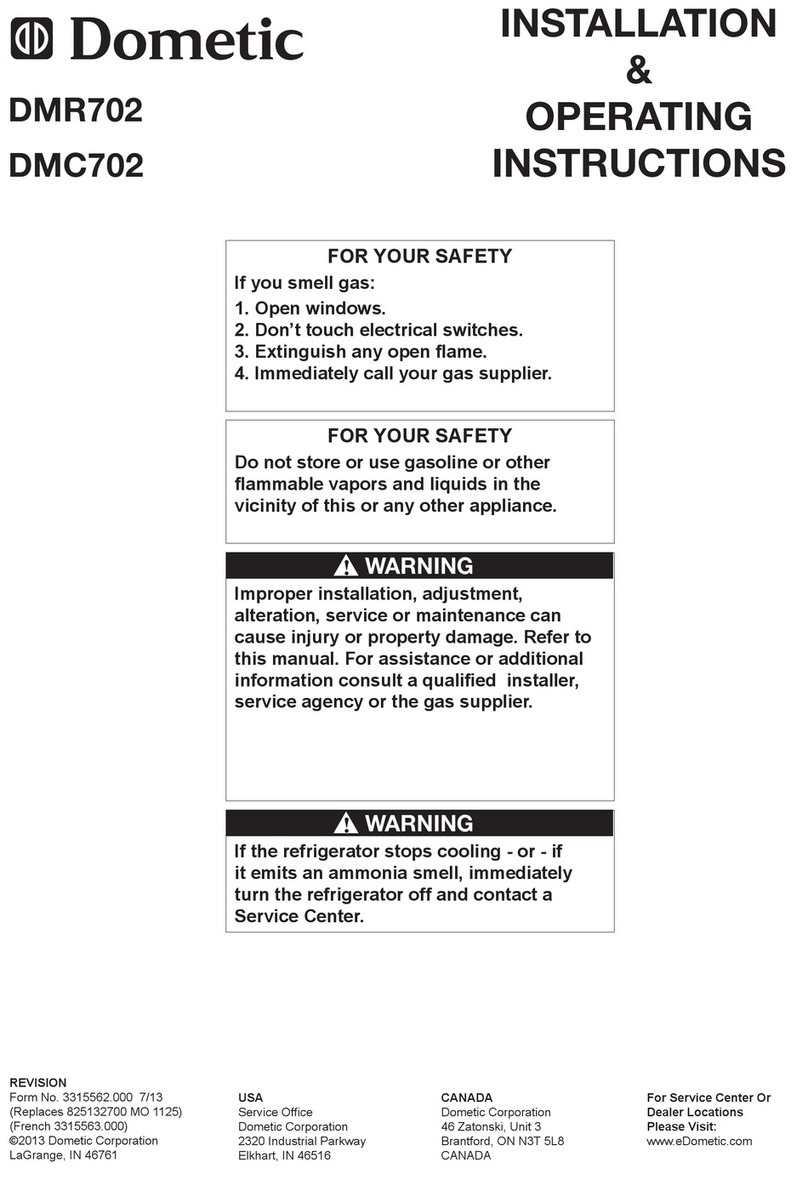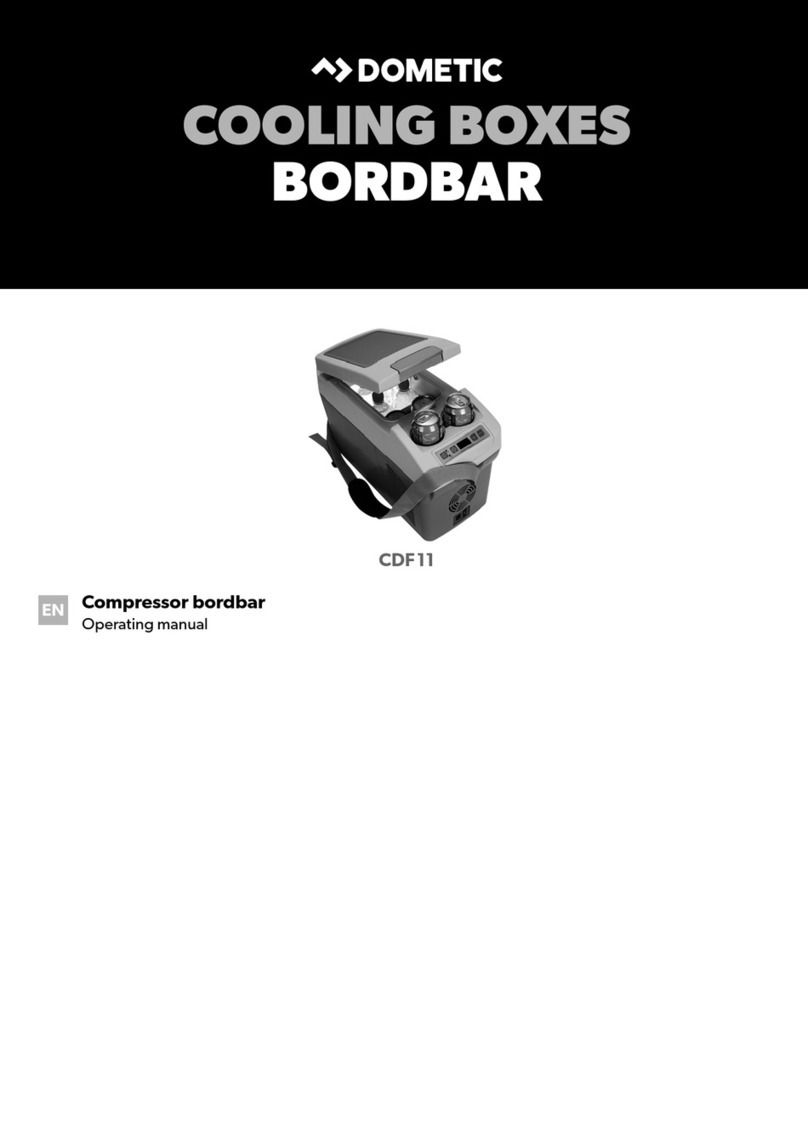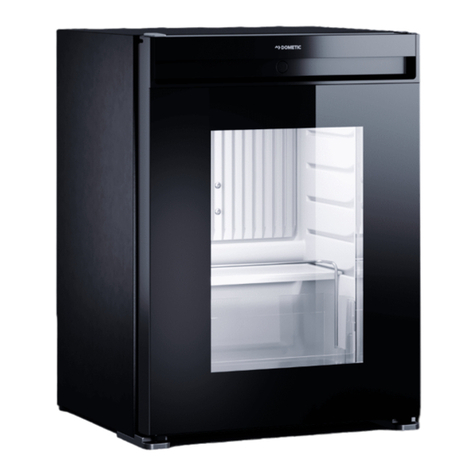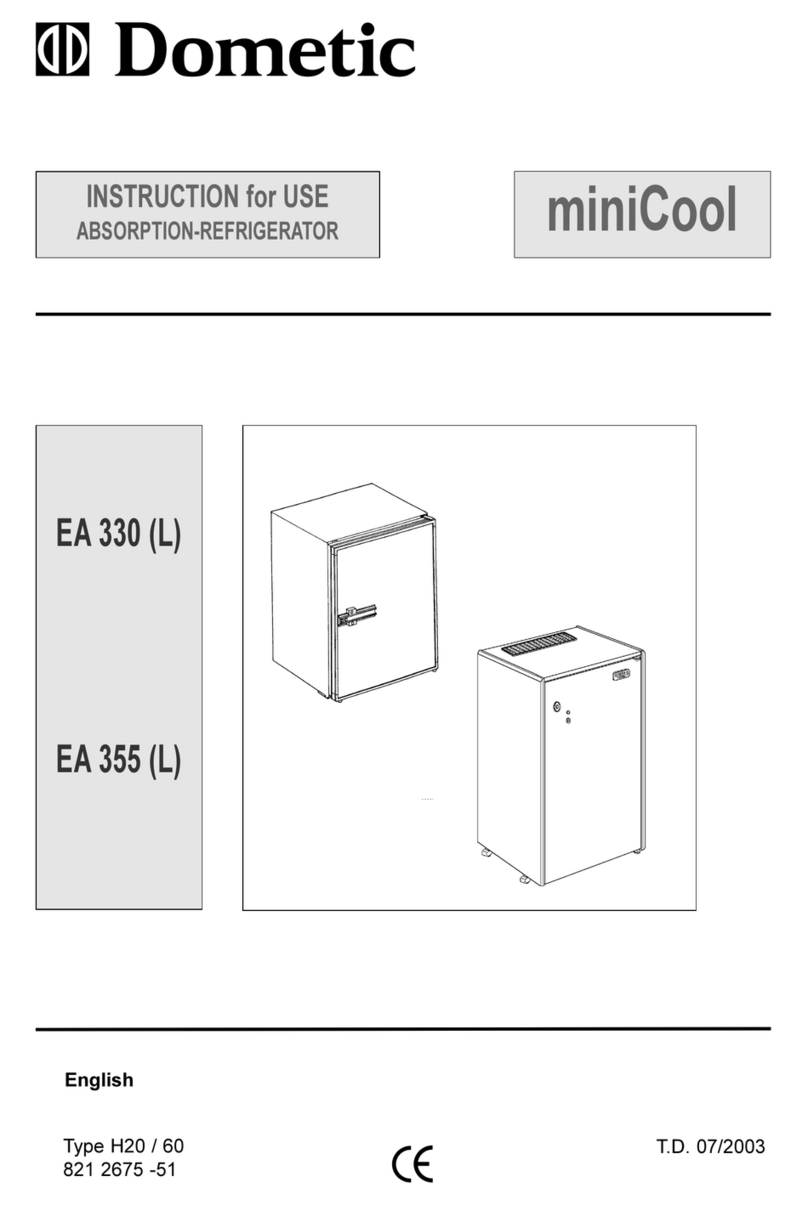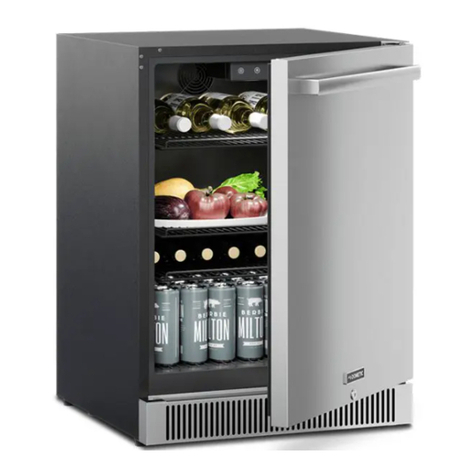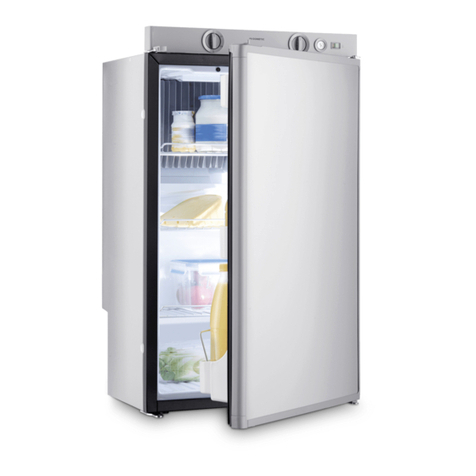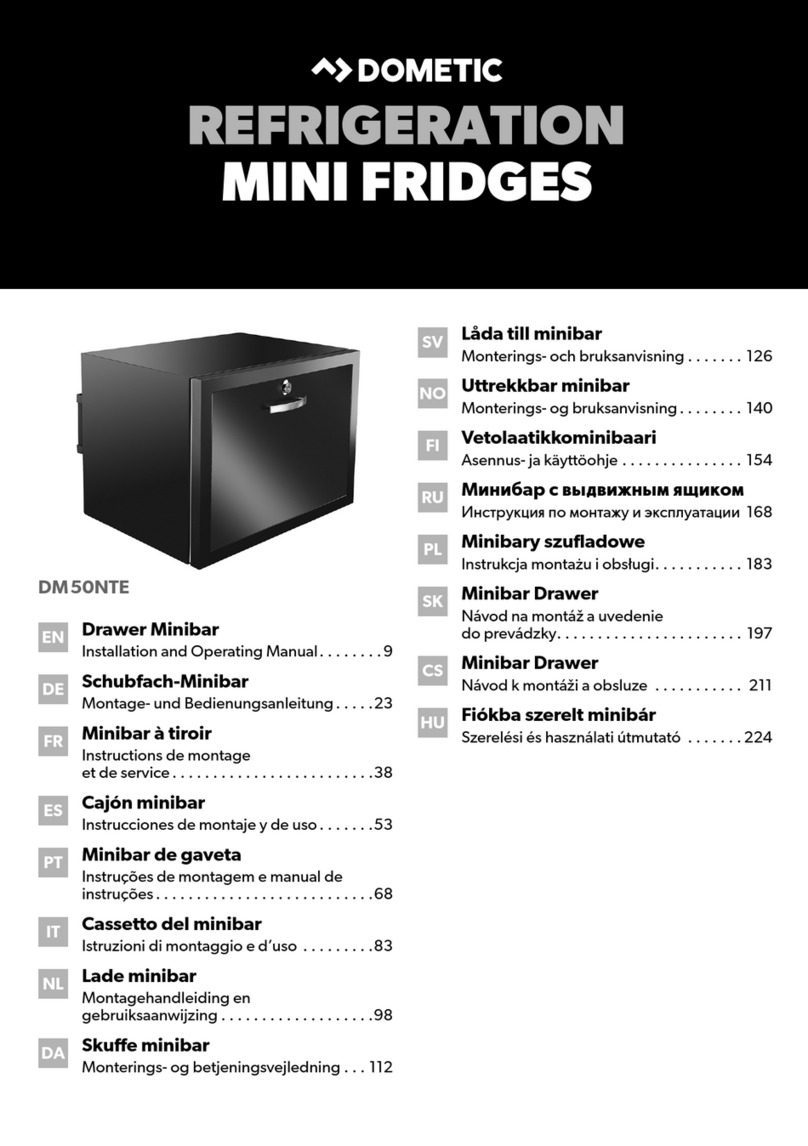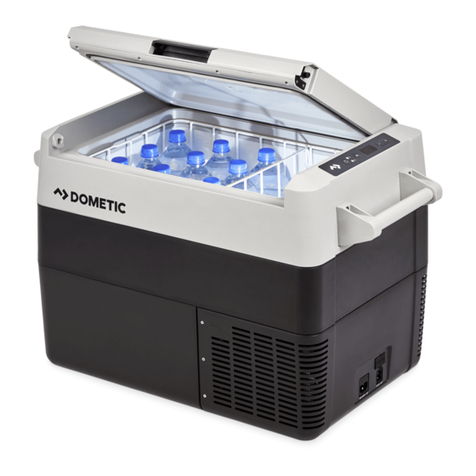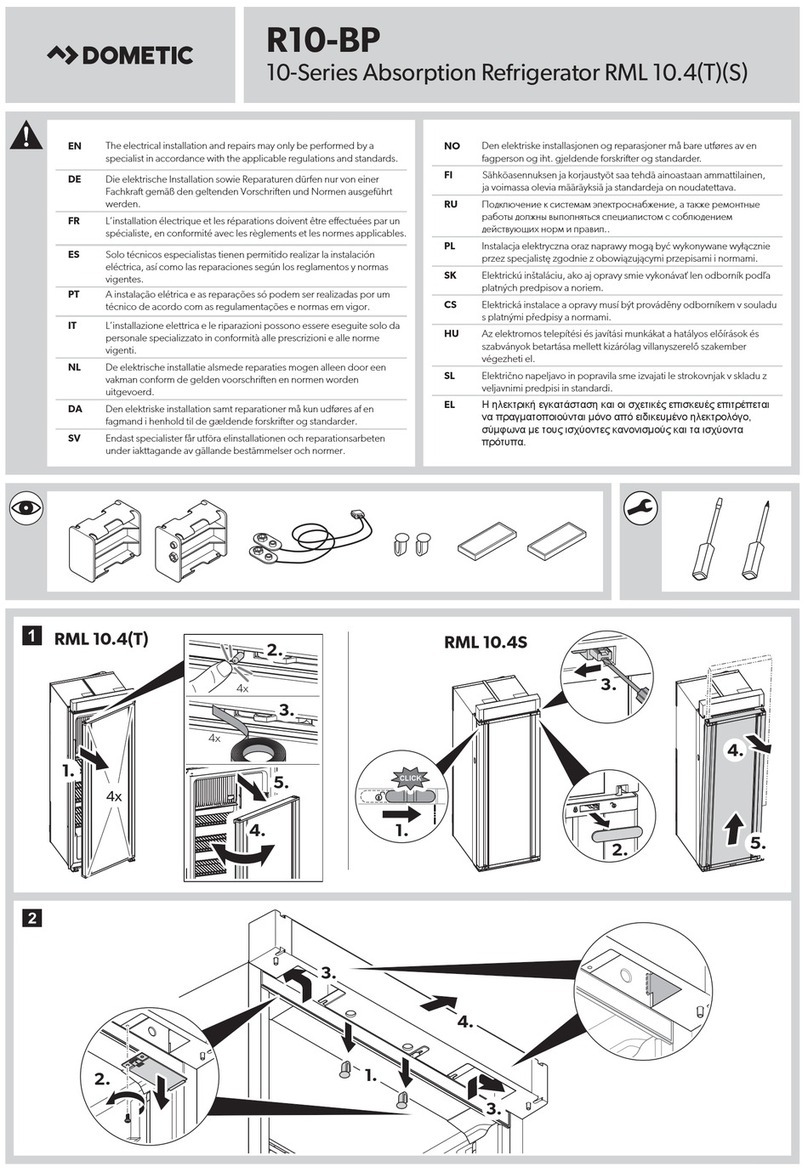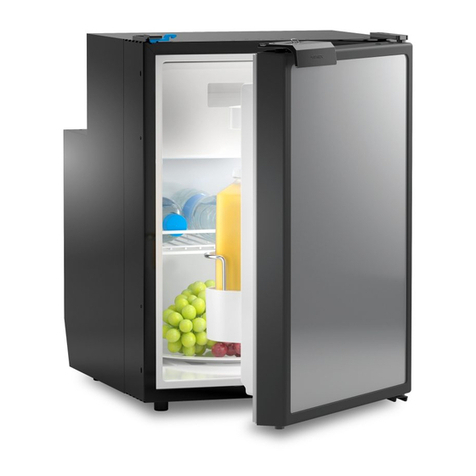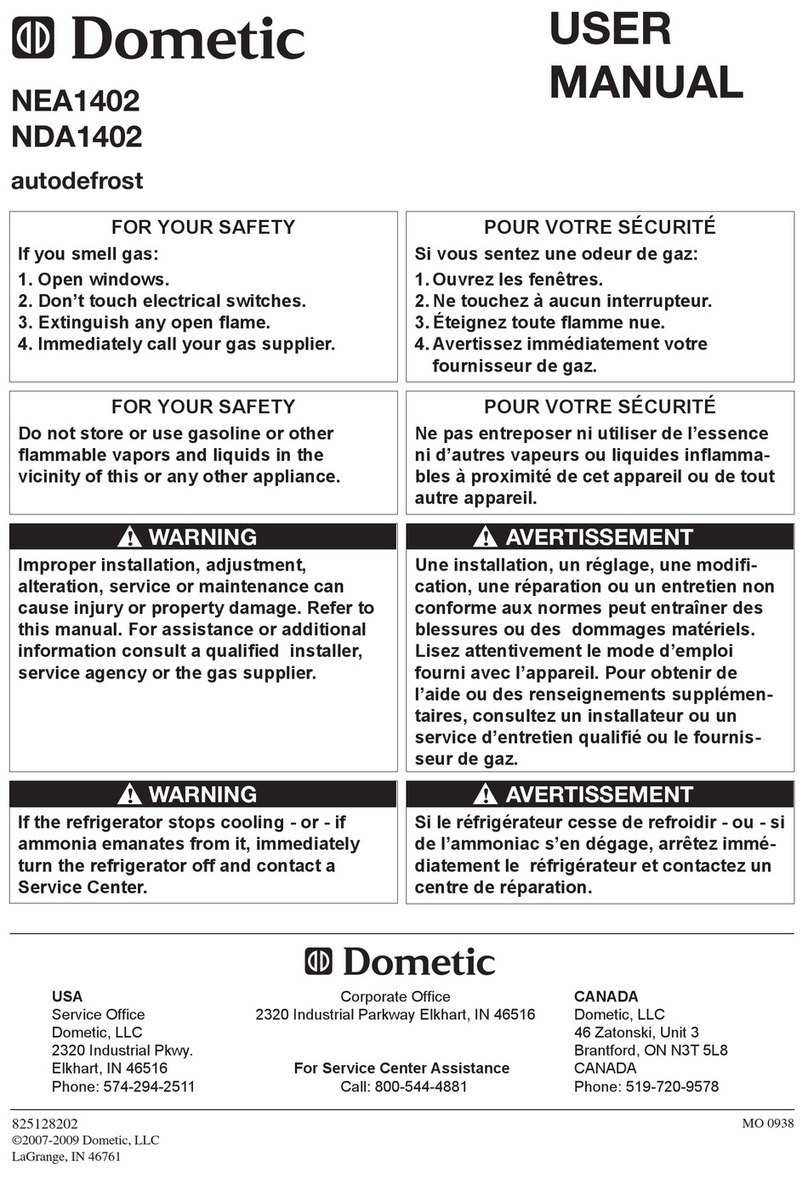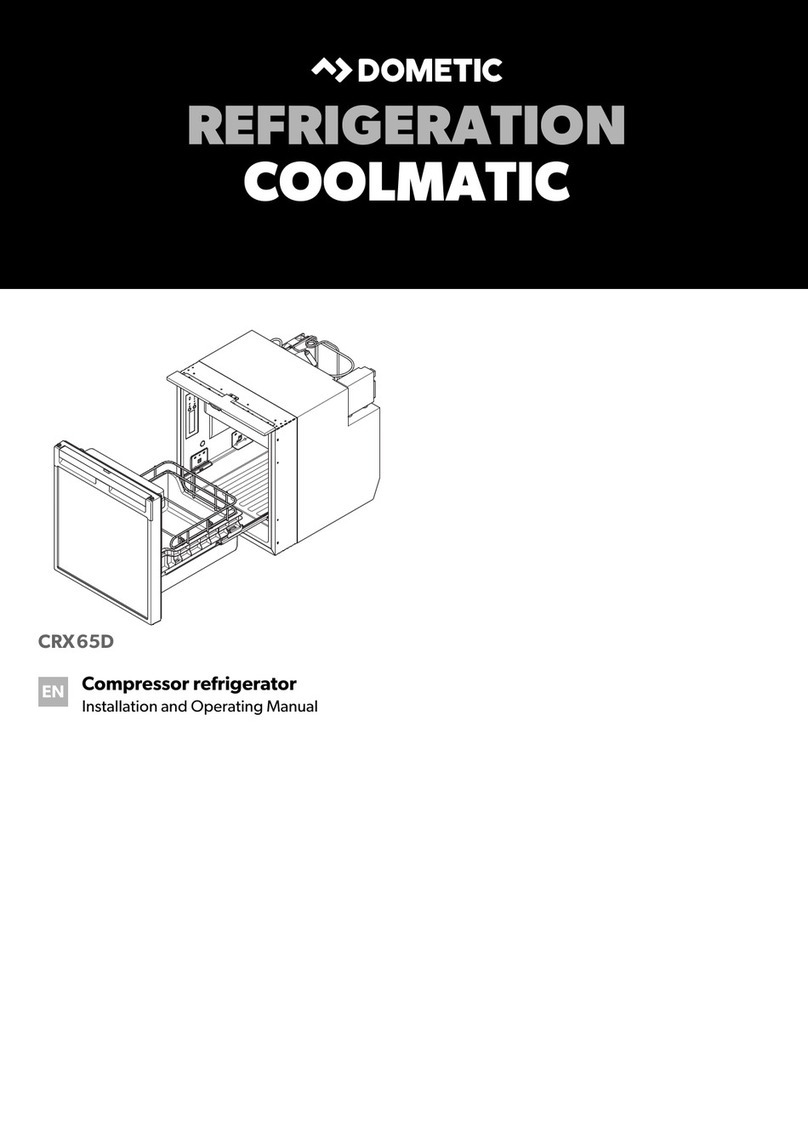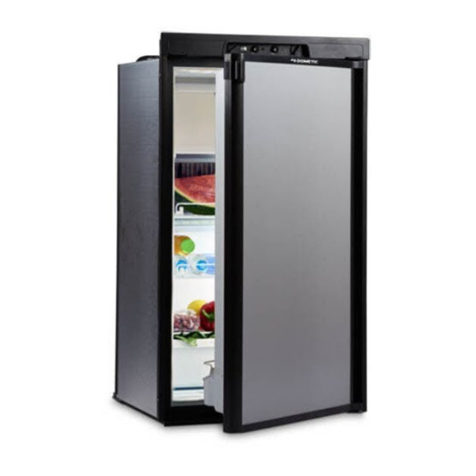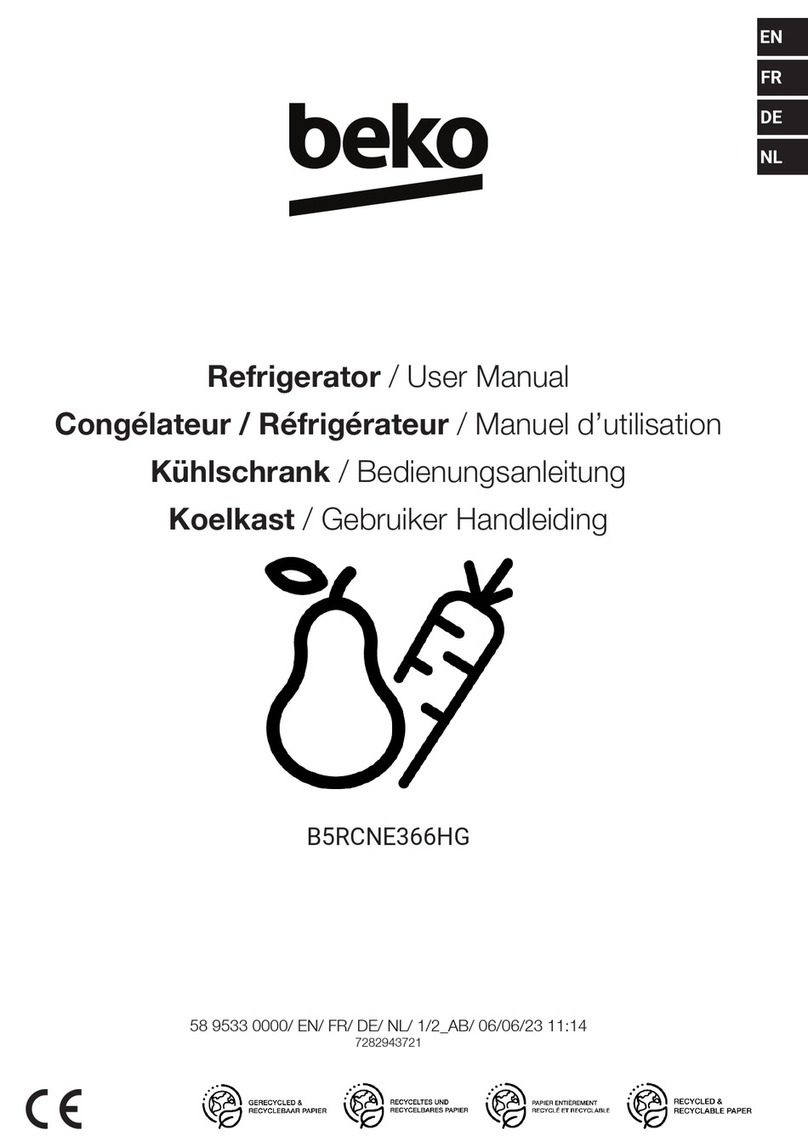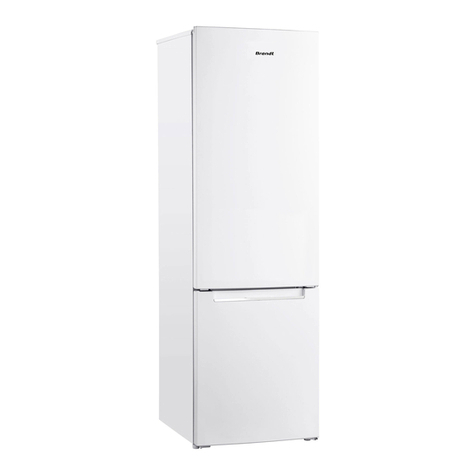8
NOTE: Defrost water runs from the drip tray to a recep-
tacle at the rear of the refrigerator where it normally
evaporates. (See FIG. 1).
With a lot of defrost water as a result of heavy frosts
build up on the cooling fins, move the plastic drain tube
into a water tight bucket or container, (access through
louvered service panel on the outside of the vehicle).
When all frost has melted, wipe up the excess moisture
and empty the accumulated water from the bucket. Re-
place the drain tube to its original position.
Dry the interior of the refrigerator with a clean cloth.
Replace all food and set the thermostat to “MAX” for a
few hours, then reset the thermostat to its normal posi-
tion.
The thermostat can be adjusted between “MAX” and
“OFF” to obtain the desired cabinet temperature.
The closer the knob is to “MAX” - the colder the cabinet
temperature.Theclosertheknobisto“OFF” - the warmer
the cabinet temperature.
Whenthe thermostatreaches the set temperature, it will
cut the burner back to bypass or, in electric operation,
(230-240 VAC) shut off the heating element.
The setting of the thermostat is not critical, but we rec-
ommend it be adjust to maintain a dry frost on the cool-
ingfins.Adjustthethermostatknobcloserto“MAX”when
the outside temperature becomes warm.
HOW TO USE THE REFRIGERATOR
FOOD STORAGE COMPARTMENT
Thefood storage compartmentiscompletely closedand
unventilated,whichisnecessaryto maintain therequired
low temperature for food storage. Consequently, foods
having a strong odor or those that absorb odors easily
should be covered. Vegetables, salads etc. should be
covered to retain their crispness. The coldest positions
in the refrigerator are under the cooling fins and at the
bottom of the refrigerator. The warmer areas are on the
upper door shelves. This should be considered when
placing different types of food in the refrigerator.
FROZEN FOOD STORAGE
COMPARTMENT
Quick frozen soft fruits and ice cream should be placed
in the coldest part of the compartment, which is at the
bottom of the aluminum liner. Frozen vegetables, may
be stored in any part of the compartment.
Thiscompartmentisnotdesignedfordeeporquickfreez-
ing of food. Meat or fish, whether raw or prepared, can
be stored in the frozen food storage compartment pro-
vided they are precooled first in the refrigerator. They
canbestored about threetimes longer inthe frozen food
compartment as compared to the fresh food compart-
ment. To prevent food from drying out, keep it in cov-
ered dishes, containers, plastic bags or wrapped in alu-
minium foil.
Ice cubes can be made in the freezer compartment.
For faster ice making, the trays should be placed in di-
rectcontact with the bottom ofthe freezer compartment.
Ice making is accelerated if the thermostat knob B is
turned to the “MAX” setting.
It is a good idea to do this a few hours before the antici-
pated need for ice, but be sure to turn the thermostat
back to the normal setting when the ice is formed.
Foodinthe lower compartmentmay befrozen if thether-
mostat is left on “MAX”.
DEFROSTING
Shut off the refrigerator by turning the knob A to “OFF”
position.Empty the refrigerator, leaving the drip tray un-
der the finned evaporator, and the cabinet and freezer
doors open. Defrosting time can be reduced by filling
theicetrayswith hot water andplacingtheminthefreezer
compartment.
! CAUTION
DO NOT use a hot air blower. Permanent damage
could result from warping the metal or plastic parts.
DO NOT use a knife or an ice pick, or other sharp
tools to remove frost from the freezer compartment.
They can create a leak in the ammonia system.
CLEANING THE REFRIGERATOR
Cleaning the refrigerator is usually done after it is de-
frosted or put into storage. To clean the interior liner of
the refrigerator, use lukewarm weak soda solution. Use
only warm water to clean the finned evaporator, gasket,
ice tray and shelves.
NEVER use strong chemicals or abrasives to clean
these parts, as the protective surfaces will be dam-
aged. It is important to always keep the refrigerator
clean.
SHUT- OFF (STORAGE PROCEDURE)
To shut off the refrigerator, turn the knob A to “OFF”
position. If the refrigerator will not be in operation for a
periodofweeks,itshouldbeemptied, defrosted, cleaned
andthe doors leftajar.Theice trays shouldalso bedried
and kept outside the cabinet.
DO NOT store explosive substances in the refrig-
erator, such as cigarette lighter gas, gasoline, ether
or the like.
NOTE: Sodium chromate is used for corrosion protec-
tion (less than 2 weight % of the coolant).
! WARNING

